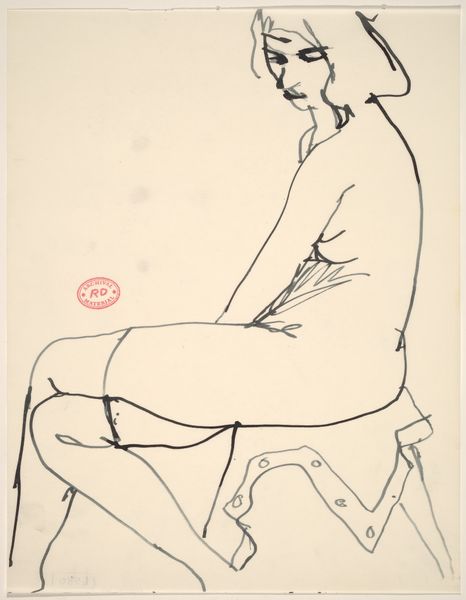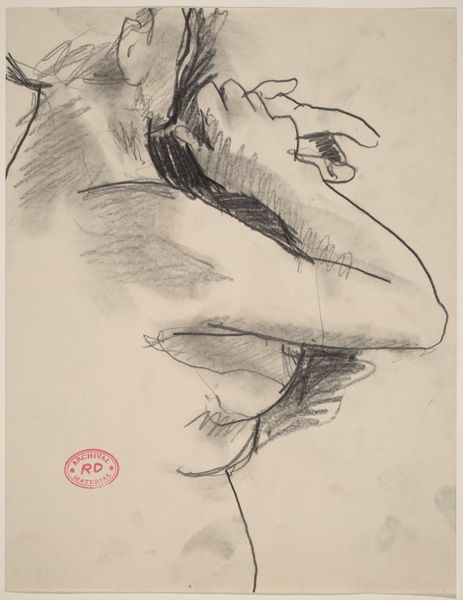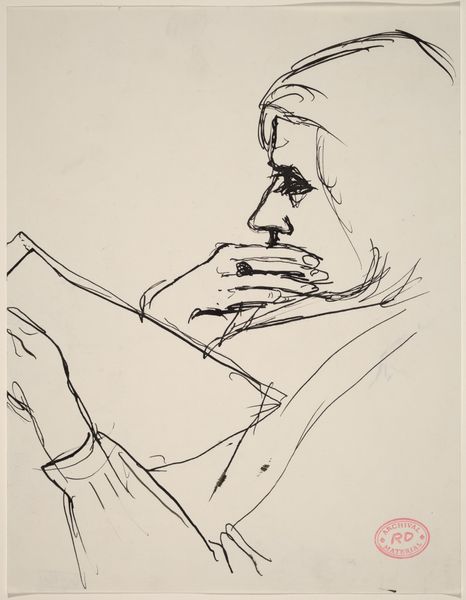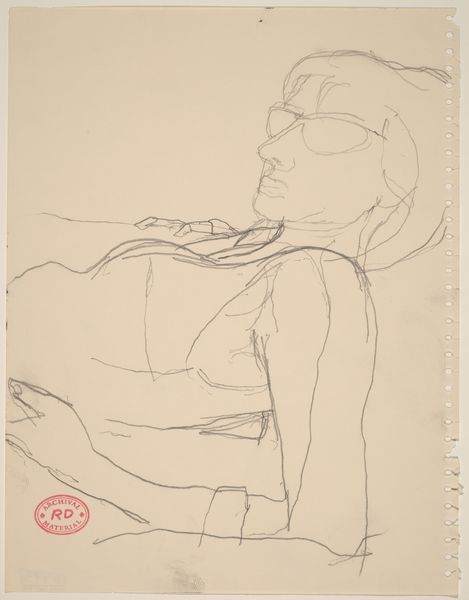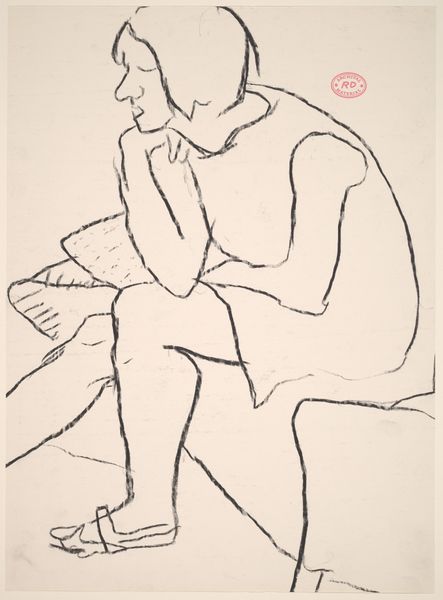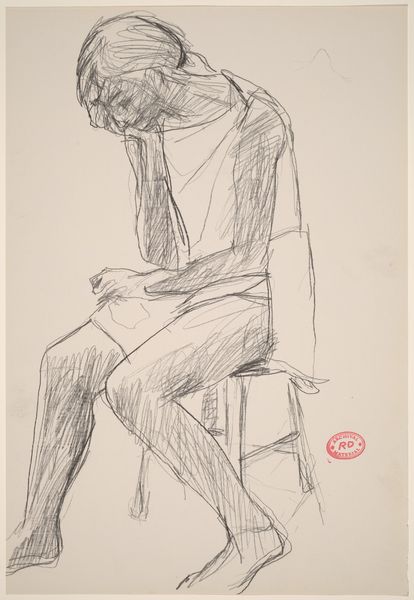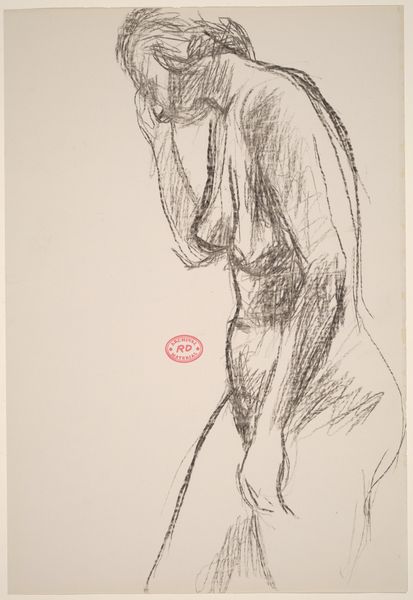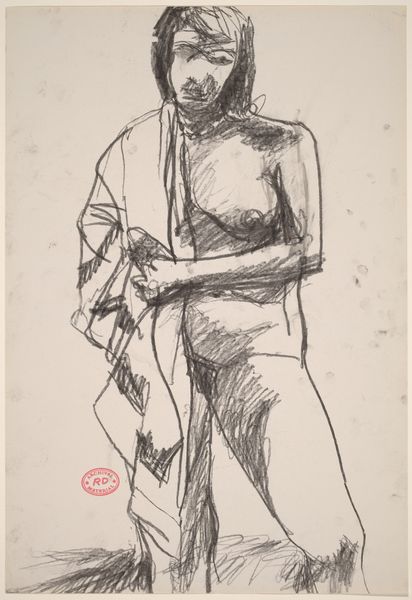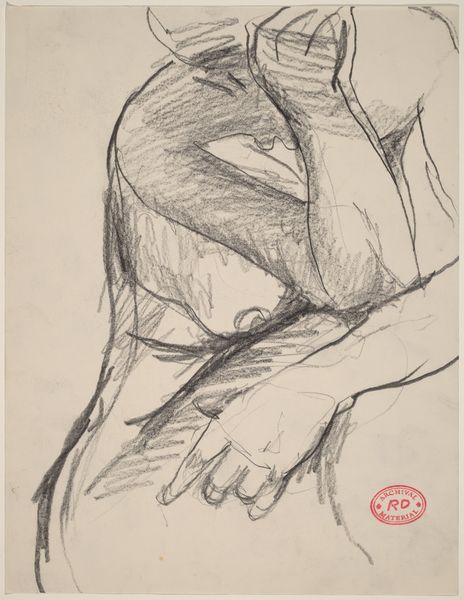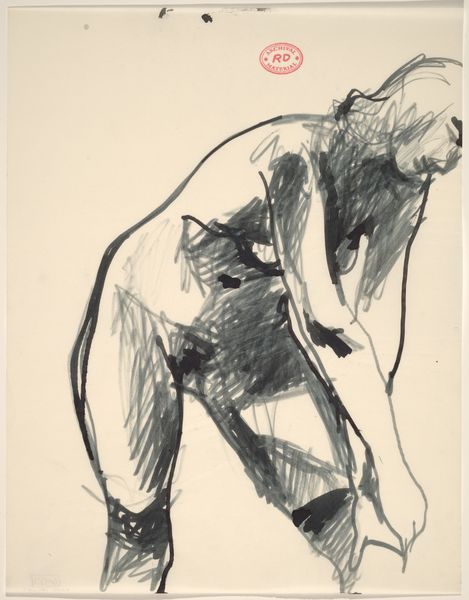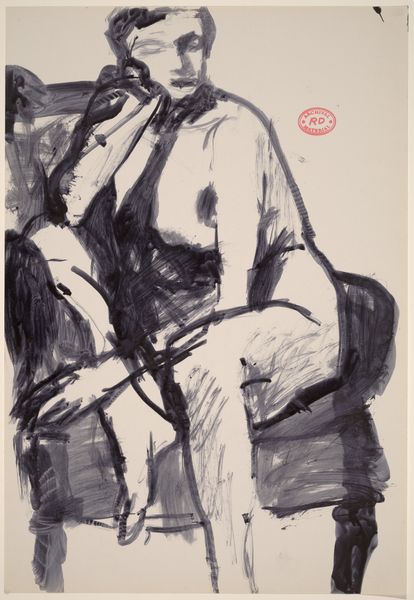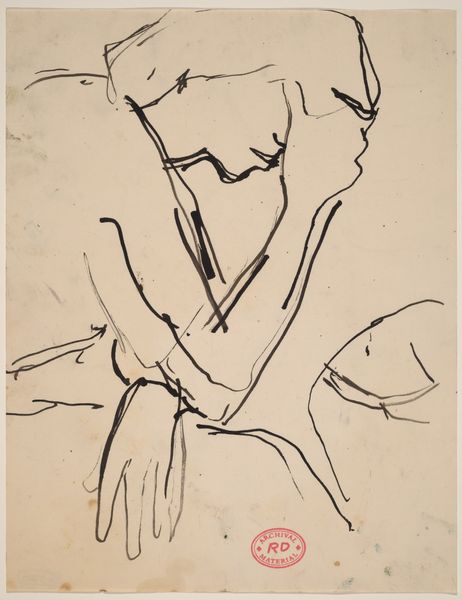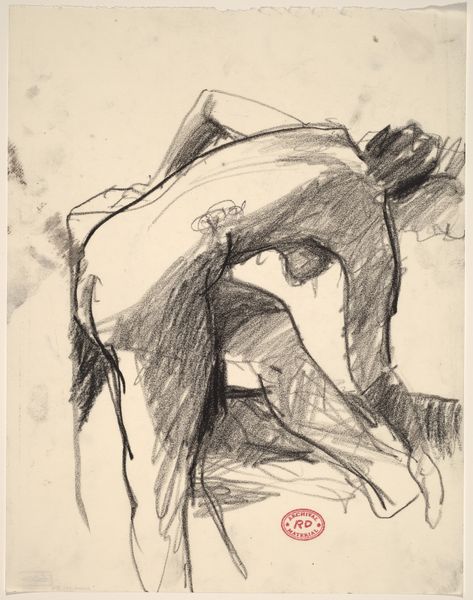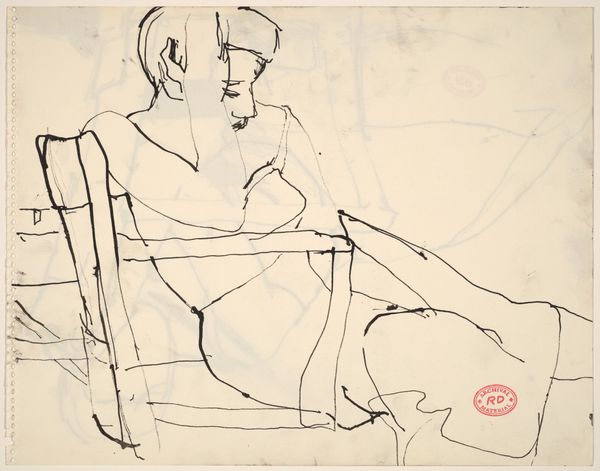![Untitled [reclining woman with her hair in a bun] by Richard Diebenkorn](/_next/image?url=https%3A%2F%2Fd2w8kbdekdi1gv.cloudfront.net%2FeyJidWNrZXQiOiAiYXJ0ZXJhLWltYWdlcy1idWNrZXQiLCAia2V5IjogImFydHdvcmtzLzg5YzE2NzMzLTIyMzctNGFhYy04YjY0LWMyY2ZhYWUyNDg1Ni84OWMxNjczMy0yMjM3LTRhYWMtOGI2NC1jMmNmYWFlMjQ4NTZfZnVsbC5qcGciLCAiZWRpdHMiOiB7InJlc2l6ZSI6IHsid2lkdGgiOiAxOTIwLCAiaGVpZ2h0IjogMTkyMCwgImZpdCI6ICJpbnNpZGUifX19&w=3840&q=75)
Untitled [reclining woman with her hair in a bun] 1955 - 1967
0:00
0:00
drawing, ink, pen
#
portrait
#
drawing
#
ink drawing
#
pen sketch
#
bay-area-figurative-movement
#
ink
#
abstraction
#
pen
#
portrait drawing
Dimensions: overall: 43.2 x 31.8 cm (17 x 12 1/2 in.)
Copyright: National Gallery of Art: CC0 1.0
Curator: This striking ink drawing, aptly named "Untitled [reclining woman with her hair in a bun]," was created by Richard Diebenkorn sometime between 1955 and 1967. Editor: It strikes me as deceptively simple. There's an almost casual energy to the lines, yet they convey a powerful sense of the figure's weight and pose. Curator: Indeed, the loose lines and visible strokes provide a great window into Diebenkorn's process. You can almost trace his hand as he circles back, defining and redefining the contours of the woman's form. There’s a vulnerability in that immediacy, inviting viewers to contemplate the act of creation itself. Editor: Absolutely. And the use of ink, such an immediate medium, reinforces that sense of raw, unfiltered creation. One wonders what the context of its making might have been - Was this a sketch from life, rapidly capturing a fleeting moment, or something drawn from memory in his studio? What kind of labor was at play? Was there a mutual artistic relationship being constructed? Curator: Thinking about the sitter – her position is definitely powerful, she looks assertive and deeply entrenched in thought. I immediately connect this to other depictions of women in art. While there isn’t necessarily an objectifying gaze from a male painter here, as we so often see throughout art history, but instead an intimate moment of thoughtful characterization through a unique application of minimalist drawing. Editor: That minimalist aspect you mentioned is so significant. Diebenkorn chose to strip down the elements to bare essentials. It pushes us to consider what isn’t there, as much as what is – the textures, tones, or any sort of ornamentation. The pen dances in relation to the labor itself, a material record of its passing. Curator: The resulting effect is a portrait beyond conventional likeness; a gesture towards inner life and how to explore this life through various materialities and social constructs, creating a drawing about form as content in itself. It brings so much more complexity to gender representation than at first one might anticipate. Editor: For me, this emphasizes the enduring quality of materiality—of ink on paper, line after line revealing this figure—against the shifting sands of cultural narratives about art, gender, and value. Curator: What an important recognition. Editor: Exactly. The drawing remains—an active engagement between artist and material—waiting for new interpretations to activate these layers of representation, process, and history.
Comments
No comments
Be the first to comment and join the conversation on the ultimate creative platform.
